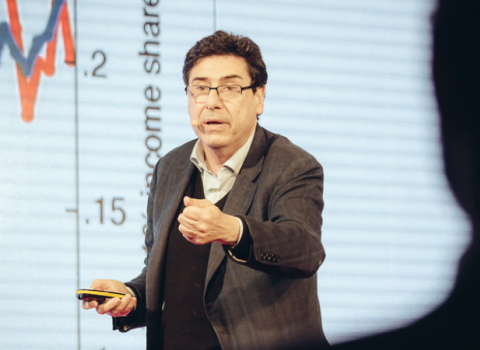There’s still a lot of work required to create the European Research Area. The R&D landscape remains fragmented and even the best institutions have much to do to meet the 2014 deadline, says a progress report this week
The first systematic analysis of national and European Union progress in creating the single market for research under the European Research Area (ERA) shows that while some progress has been made, the research landscape is still fragmented. Even the best-performing institutions have some way to go and there is a significant gap between the best and the worst performers.
Excluding the EU’s Framework R&D programme and the European Space Agency, less than 1 per cent of national R&D budgets are spent on transnational research in Europe and there are few initiatives to increase joint programming between national research funding bodies.
On the basis of this analysis, it looks unlikely that the 2014 deadline set by heads of state for completing the ERA will be met. R&D Commissioner Máire Geoghegan-Quinn who is charged with delivering to this deadline said, “This report shows that there is still much work to do.”
Indeed, one of five key priorities, the opening up and connecting national research systems looks to be stalled at the first fence. According to ERA Progress Report 2013 published earlier this week, research programmes in member states are still operating according to different rules, making transnational research cooperation difficult.
Meanwhile, attempts to implement large shared infrastructures, such as very intense lasers or extremely large telescopes, are being held back by financial, management and political barriers, and national rules or high entry costs are preventing researchers from other countries accessing infrastructures that have been put in place.
Using the money best
At the same time, national R&D budgets are getting a reduced share of overall government spending in some member states, putting the target of spending 3 per cent of GDP on R&D even further out of reach.
Money matters of course, but as Geoghegan-Quinn noted, “We need fully functional research and innovation systems to use the money best.”
The creation of ERA is not only intended to avoid duplication of effort, generate critical mass and make European research more competitive, it is also intended to allow for the free movement of knowledge and of researchers. But this so called ‘Fifth Freedom’ is some way from being realised. Grants are not portable between countries and it is hard for non-residents to access grants in other member states. Open, transparent and merit-based recruitment of researchers across Europe is still not the norm: more than half of vacancies are not advertised at a European level on the Euraxess jobs portal, limiting mobility for researchers and access to the best skills for employers.
According to the analysis, the area of ERA where progress is weakest is gender equality. “European research still suffers from a substantial loss, and inefficient use, of highly skilled women,” the report says.
This report on the state of play in ERA provides a factual baseline for a full assessment of progress to be made next year. However, it is a limited view, with only 3,450 of 10,500 research funding and research performing institutions invited to take part in the survey responding. The Commission says that even if partial, this monitoring process delivers the information needed to take ERA policy forward.





 A unique international forum for public research organisations and companies to connect their external engagement with strategic interests around their R&D system.
A unique international forum for public research organisations and companies to connect their external engagement with strategic interests around their R&D system.